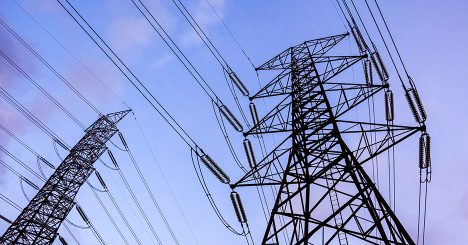By Craig I. Nakanishi and Nathan C. Yang
Convenience, Connectivity, and Competition – The convergence of the consumer electric energy industry and the Internet of Things
A quiet revolution is occurring in the electric energy industry that will create a new paradigm and transform our lives with innovative products, services and business opportunities. It is not the clean/renewable energy movement but the convergence of the electric industry with the “Internet of Things” (“IoT”)1.
This convergence brings the possibility of unlimited convenience for consumers. Imagine an autonomous electric vehicle that syncs with your personal calendar, and then shuttles you to where you need to be, when you need to be there. Think of roads that alert your vehicle to traffic conditions, maintenance requirements, and even open parking spaces. Visualize washing machines, microwaves, dishwashers, air conditioners, heaters, and sprinklers automatically interfacing, starting, and stopping based on your daily schedule. Now imagine all of this paired with automated energy delivery systems that constantly monitor your customized energy consumption needs in order to generate the most efficient economic use and pricing of energy for you, the customer.
For electric companies, consider the ability to optimize operations and schedule power needs in response to real time demand and supply. In other words, think of the value to a utility from obtaining and distributing the right amount of power, at optimal prices, every second of the day, and having that information a day, a week, or even months, in advance. Determining the cost of service to customers would be made infinitely easier. Maintenance of power plants and other facilities would be optimized. Transparency and sophisticated control over utility assets and resources will result from the convergence of the electric energy industry with the IoT.
Are We There Yet?
While the convergence of the electric industry and the IoT is in its infancy, the IoT continues to rapidly develop, grow, and refine numerous technologies that will catapult society into this future. Each day brings companies, such as Ford, Google, Apple, Uber, Intel, Tesla, General Motors and other car manufacturers closer to introducing autonomous vehicles2 and wireless induction charging of electric vehicles. Disney Research has created the Quasistatic Cavity Resonance for Ubiquitous Wireless Power Transfer, a special room that can wirelessly charge devices through harnessing magnetic fields3. Nest, a company producing self-learning sensor-driven home technologies, has begun to market its third generation Learning Thermostat, which can learn temperature preferences and generate a customized, energy-efficient home schedule4. Household equipment is even beginning to communicate externally, as Home Connect and LG Electronics create products that allow for controlling multiple appliances from a smartphone, in order to realize superior convenience and energy efficiency5.
On the utilities’ side, companies such as Duke Energy are already experimenting with smart self-healing grid systems that can balance demand and supply, in addition to automatically reconfiguring and restoring power when a problem occurs6. Various state and federal government programs are encouraging the move to “smart” technology, such as the Department of Energy’s Grid Modernization Initiative, a cross-sector collaboration between the government, researchers, utilities, consumers, and other stakeholders to integrate and modernize the electrical grid in the U.S.7 As more utilities implement “Smart Grid” technologies, the convergence of the electric industry with the IoT world will accelerate and make these future possibilities a reality.
As the IoT world evolves, competition in the electric industry (and other industries) will increase as new and creative ways are devised to provide power to consumers. For example, homeowners with excess solar power may be able to sell the energy to passing cars through energy transfer devices embedded in roadways. Electrical energy can be commoditized and packaged with other products such as cars, electronics and household appliances. Soon, we will be able to walk into a room, drive a car, catch a bus, train, or airplane, and our devices will charge automatically according to our customized needs. Imagine the convenience of never having to manually charge your electronics. The goal will be to tie the many aspects of daily life into seamless and automatic communication with each other, and energy suppliers, in order to increase automation of activities and quality of life.
Future Questions
The convergence of IoT and the electric industry will bring to the forefront many questions, including the role of traditional utilities, the involvement of regulatory agencies, privacy and security issues, as well as new and exciting products, services and business opportunities. Maintaining privacy, especially when your car knows your appointments and daily schedule, is a top priority as increased connectivity across multiple parties and devices makes security breaches much more probable and harmful. Regulation and competition will intersect on new levels as stakeholders determine who controls various segments of increasingly ubiquitous energy generation, transmission, and storage. Who will the players be in this paradigm? Will vertically integrated companies provide the products, services and energy in a “one-stop” shop model, or will another model prevail, such as a consortium of companies, strategic partnerships, or other collaborations among various entities? For the legal community, law firms that stay abreast of industry developments are positioned uniquely to protect clients and help them realize their goals. Subsequent articles will explore these topics in more detail.
For now, keep in mind a future where obtaining energy and information will be effortless and instantaneous. In the words of George Lucas, “[y]ou can’t do it unless you can imagine it.”
Craig I. Nakanishi has extensive experience representing clients in the petroleum, electric, and alternative/renewable energy industries. He is a partner at the firm with a focus on energy, public utilities, and business and real property transactions. Craig is the chair of the firm’s Energy and Public Utilities practice.
Nathan C. Yang enjoys collaborating with clients to develop creative and cost-effective solutions on a variety of complex corporate, real estate, international and energy-related legal matters. He is an associate in the Real Estate, Corporate, Energy, Finance, and International Practice Groups at Cades Schutte. Nate has successfully guided a diverse range of clients, from individuals to multinational corporations, in navigating Hawai‘i’s unique legal environment.
- IoT is a giant network of instantaneously communicating internet-connected devices, sensors, machines, and “things” gathering, analyzing, interpreting data and leveraging the information with cloud based applications to create a “smart” universe. See The IOT and EE, 155 No. 1 Pub. Util. Fort. 66 (2017)
- RANKED: The 18 companies most likely to get self-driving cars on the road first, http://www.businessinsider.com/the-companies-most-likely-to-get-driverless-cars-on-the-road-first-2017-4 (April 3, 2017).
- Quasistatic Cavity Resonance for Ubiquitous Wireless Power Transfer, https://www.disneyresearch.com/publication/quasistatic-cavity-resonance-for-ubiquitous-wireless-power-transfer/ (February 15, 2017).
- Nest Learning Thermostat Review: Smart temperature control that sticks to your schedule, http://www.popsci.com/nest-learning-thermostat-review-smart-thermostat-that-actually-lives-up-to-name (May 25, 2017).
- Home Connect, http://www.home-connect.com/us/en/ (as of June 5, 2017); LG SmartThinQ Smarter Living Has Arrived, http://www.lg.com/us/discover/smartthinq/thinq (as of June 5, 2017).
- Duke Energy Smart Grid, https://www.duke-energy.com/our-company/about-us/smart-grid (as of June 5, 2017).
- Grid Modernization Initiative, https://energy.gov/under-secretary-science-and-energy/grid-modernization-initiative (as of June 5, 2017).





